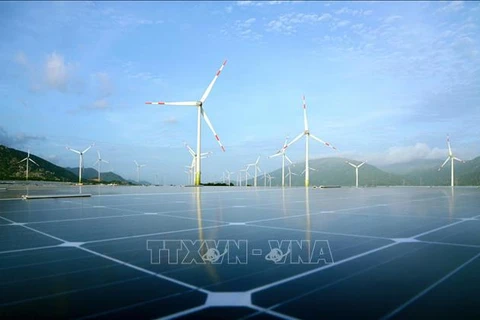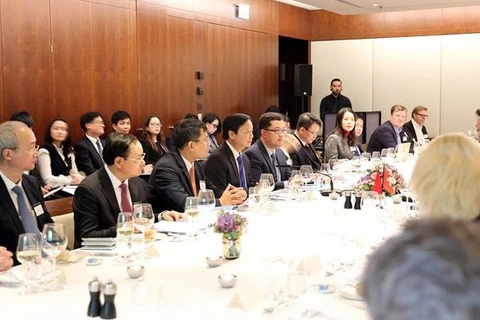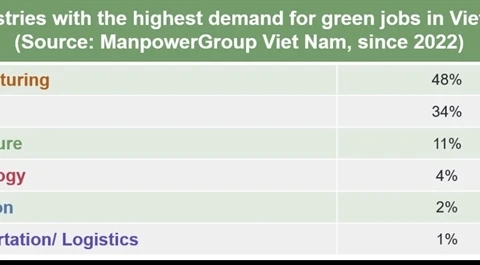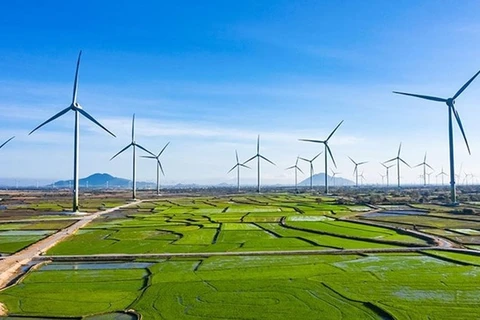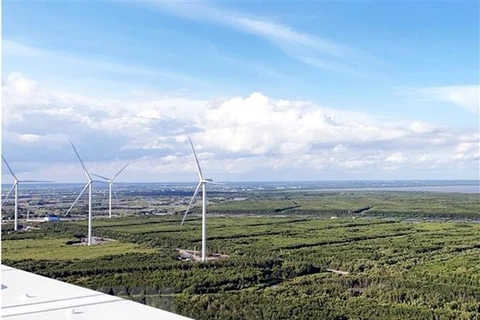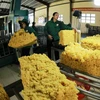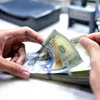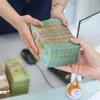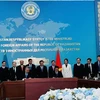Hanoi (VNA) – In efforts to develop a green and circular economy, Vietnam is taking steps to boost green credit, the Lao dong (Labour) daily reported.
Given the importance of green credit to sustainable economic development, the Prime Minister issued the national green growth strategy for 2021 - 2030 with a vision to 2050, and the development strategy for the banking sector by 2025 with orientations towards 2030, which includes orientations for green credit and green banking.
By the end of 2022, outstanding credit for green projects approximated 500 trillion VND (21.3 billion USD), accounting for some 4.2% of total outstanding loans. It focuses on such fields as renewable and clean energy (47%) and green agriculture (over 30%).
Last February, a sustainable loan framework was issued by a Vietnamese bank for the first time. The framework of the Joint Stock Commercial Bank for Investment and Development of Vietnam (BIDV), built with advice from many major international financial institutions, is considered a contribution to the implementation of the Vietnamese Government’s commitment to achieve the target of net zero emissions by 2050.
BIDV Director General Le Ngoc Lam said the framework will help his bank provide sustainable financial products matching international standards for domestic businesses. It will also serve as a basis for BIDV to enhance cooperation in sustainable development with international organisations.
To promote green credit, MA Nguyen Thi Anh Ngoc from the University of Economics Ho Chi Minh City held that it is necessary to diversify green credit products, which will help banks attract a wide range of clients and improve competitiveness. Banks should tailor those products to the need of each type of enterprises.
However, she noted banks also need to take into account their existing resources during product diversification, or they can face operational inefficiency./.
Given the importance of green credit to sustainable economic development, the Prime Minister issued the national green growth strategy for 2021 - 2030 with a vision to 2050, and the development strategy for the banking sector by 2025 with orientations towards 2030, which includes orientations for green credit and green banking.
By the end of 2022, outstanding credit for green projects approximated 500 trillion VND (21.3 billion USD), accounting for some 4.2% of total outstanding loans. It focuses on such fields as renewable and clean energy (47%) and green agriculture (over 30%).
Last February, a sustainable loan framework was issued by a Vietnamese bank for the first time. The framework of the Joint Stock Commercial Bank for Investment and Development of Vietnam (BIDV), built with advice from many major international financial institutions, is considered a contribution to the implementation of the Vietnamese Government’s commitment to achieve the target of net zero emissions by 2050.
BIDV Director General Le Ngoc Lam said the framework will help his bank provide sustainable financial products matching international standards for domestic businesses. It will also serve as a basis for BIDV to enhance cooperation in sustainable development with international organisations.
To promote green credit, MA Nguyen Thi Anh Ngoc from the University of Economics Ho Chi Minh City held that it is necessary to diversify green credit products, which will help banks attract a wide range of clients and improve competitiveness. Banks should tailor those products to the need of each type of enterprises.
However, she noted banks also need to take into account their existing resources during product diversification, or they can face operational inefficiency./.
VNA
